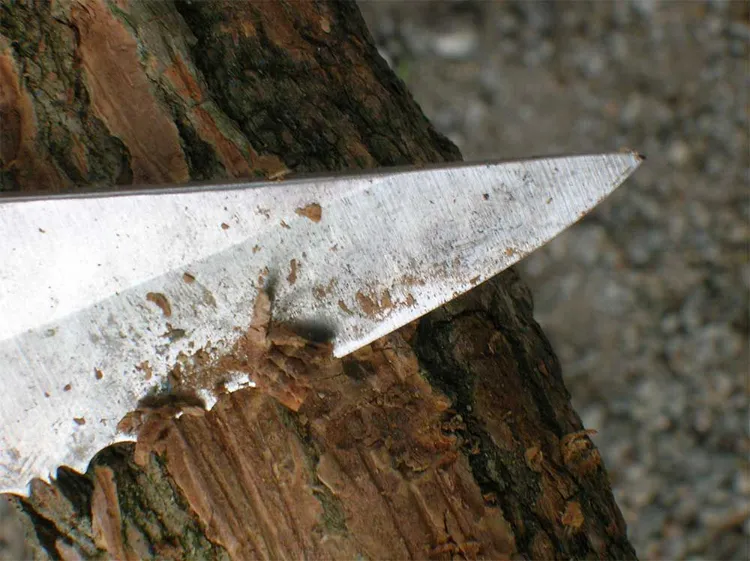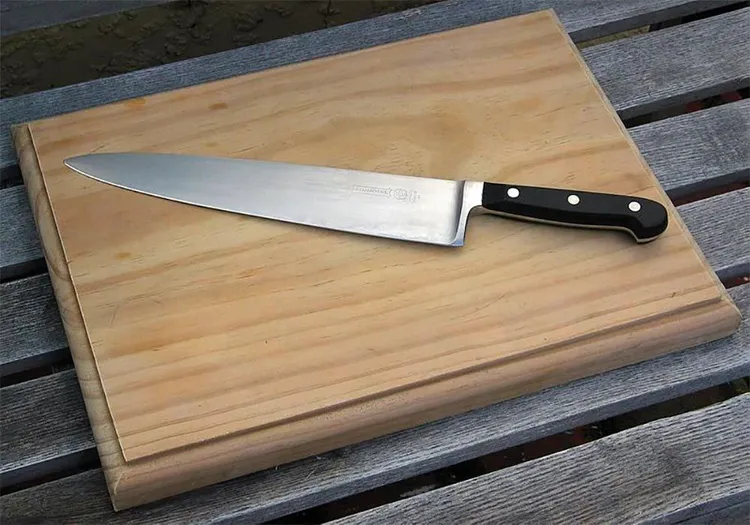Our recommendations are made independently through Research & Testing. We may receive commissions from purchases made via our links.
Forged vs Stamped Knives: The Distinctions
Forged vs stamped knives: how the different construction types affect the quality and uses of kitchen knives, and how to tell them apart.
Seeing the price difference between forged knives vs stamped knives, most people assume that forged knives, the more expensive ones, are of superior quality.
That used to be the absolute truth. But with advancements in the knife making industry, stamped knives are catching up.
This article aims to shed light on the ways knives are made and how that affects their quality. We will also point out simple basic characteristics to help you determine if a knife was forged or stamped.
How Forged Knives and Stamped Knives Are Made
A forged knife is usually made from one single piece of steel. It is heat treated, and hammered or pounded into its shape.
Traditionally, forged knives are made with a technique called hot drop forging. To make a knife using this technique, the metalsmith puts a piece of steel into a furnace until it’s red hot. They then pull it out and beat it with a hammer into the shape of a knife before putting it through numerous rounds of sharpening. This used to be tedious manual work which could take weeks or even months.
Nowadays, there are machines to help with the heavy labor. Regardless, the core principles of the process remain the same. Forging allows the metal to be heat-treated, annealed, and case-hardened into its final shape.
A stamped knife, meanwhile, is cut out from a large sheet of steel. It’s made in the same way a handmade cookie is cut using a cookie cutter. The blade is then tempered, hardened, and finished.
Forged vs. Stamped Knives: The Characteristic Differences
Terminology
Before diving into the nitty-gritty of forged vs stamped knives, let’s take a look at the anatomy of a knife to get you familiar with the terminology. We will mostly discuss the blade, bolster, tang, belly, and the handle, so may want to pay more attention to those parts of the knife.

How Forged Knives and Stamped Knives Are Different
Thickness
Being made from a single piece of alloy, forged knives have thicker and harder blades.
Stamped knives are typically thinner and more bendable.
Tang and Bolster
Most forged kitchen knives sport a full tang running all the way through the handle. This gives them greater balance and stability. They also have rivets to secure the grips onto the tang, and sometimes, a metal butt cap, which protects the grips and improves balance.
Most stamped knives, especially those from cheap brands, only have a partial tang. This makes these knives tip-heavy, and the blade may become loose and detach from the handle after some time. Note that many upscale brands now offer stamped knives with full tangs.
The bolster, also referred to as a fingerguard, while increasing the weight and balance of a knife, is more often a feature on a forged knife but rarely on a stamped knife.
Weight
With a thicker blade, fuller tang, and a bolster, a forged knife is almost always heavier than a stamped one of the same length and width.
This weight actually helps in the cutting process: you don’t have to apply as much force with a heavier knife, as gravity is working for you. It’s also easier to rock a more weighted knife on a cutting surface; it is this rocking motion which does the cutting.
For those with weak wrists or fingers, however, the light weight of a stamped knife allows them to work in the kitchen for extended periods of time without becoming fatigued.
Material
Forged knives can be made from all kinds of alloys, the most popular ones being stainless steel, high carbon stainless steel, and carbon steel. All these alloys go through various heat treatments and as a result, tend to have higher hardness levels, measuring anywhere between 54 and 63 on the Rockwell Hardness Scale. This means their edge takes longer to form a burr and requires less honing and sharpening.
The high hardness is a double-edged sword, however; these knives can be more brittle than knives which are softer, and their edges and blades may chip or break more easily under concentrated pressure.
You will find stamped knives of the same materials as forged knives. However, there are more stainless steel stamped knives due to its affordability. They’re also not heat-treated or hardened to the levels seen in forged knives.
Stamped knives are more ductile and flexible. A stamped knife’s blade is less likely to break when dropped or chopping hard material, they just bend instead.
Price
Both types of knives have their advantages and disadvantages. In terms of value for money, however, the use of more material and a complex production process make forged knives the more expensive option. Since stamped knives use less resources and are quicker to mass produce, they are usually the more affordable option.
The Verdict
Both forged vs stamped knives can be of good quality and serve you for decades. Forged blades may offer better toughness and stability for precision cutting and the chopping of harder and thicker materials. If affordability and lightweight are important factors to you, then a good stamped knife from a reliable brand will serve you well.
You can also own both and switch between them for different tasks; discovering for yourself which works best for different recipes, affordability and durability.
Which kind of knives do you have, stamped or forged? How is your experience with these knives? Share your thoughts with us in the comment section.
Authors
Luna Regina is an accomplished writer and author who dedicates her career to empowering home cooks and making cooking effortless for everyone. She is the founder of HealthyKitchen101.com and HealthyRecipes101.com, where she works with her team to develop easy, nutritious recipes and help aspiring cooks choose the right kitchen appliances.






